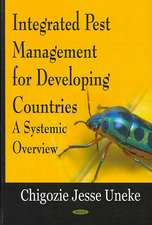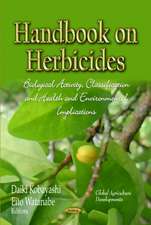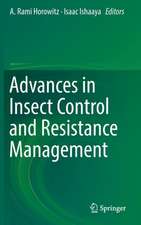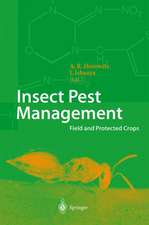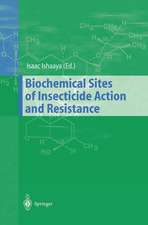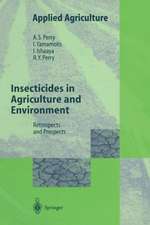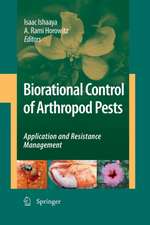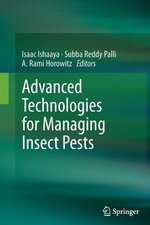Insecticides with Novel Modes of Action: Mechanisms and Application: Applied Agriculture
Editat de Isaac Ishaaya, Danny Degheeleen Limba Engleză Paperback – 4 dec 2010
| Toate formatele și edițiile | Preț | Express |
|---|---|---|
| Paperback (1) | 1653.06 lei 6-8 săpt. | |
| Springer Berlin, Heidelberg – 4 dec 2010 | 1653.06 lei 6-8 săpt. | |
| Hardback (1) | 1223.55 lei 6-8 săpt. | |
| Springer Berlin, Heidelberg – 25 mai 1998 | 1223.55 lei 6-8 săpt. |
Preț: 1653.06 lei
Preț vechi: 2015.93 lei
-18% Nou
Puncte Express: 2480
Preț estimativ în valută:
316.30€ • 330.28$ • 261.20£
316.30€ • 330.28$ • 261.20£
Carte tipărită la comandă
Livrare economică 16-30 aprilie
Preluare comenzi: 021 569.72.76
Specificații
ISBN-13: 9783642083143
ISBN-10: 3642083145
Pagini: 308
Ilustrații: XV, 289 p.
Dimensiuni: 155 x 235 x 16 mm
Greutate: 0.44 kg
Ediția:Softcover reprint of the original 1st ed. 1998
Editura: Springer Berlin, Heidelberg
Colecția Springer
Seria Applied Agriculture
Locul publicării:Berlin, Heidelberg, Germany
ISBN-10: 3642083145
Pagini: 308
Ilustrații: XV, 289 p.
Dimensiuni: 155 x 235 x 16 mm
Greutate: 0.44 kg
Ediția:Softcover reprint of the original 1st ed. 1998
Editura: Springer Berlin, Heidelberg
Colecția Springer
Seria Applied Agriculture
Locul publicării:Berlin, Heidelberg, Germany
Public țintă
ResearchCuprins
Insecticides with Novel Modes of Action: An Overview.- Ecdysone Agonists: Mechanism and Biological Activity.- Pymetrozine: A Novel Insecticide Affecting Aphids and Whiteflies.- Imidacloprid, a Novel Chloronicotinyl Insecticide: Biological Activity and Agricultural Importance.- Buprofezin: A Novel Chitin Synthesis Inhibitor Affecting Specifically Planthoppers, Whiteflies and Scale Insects.- New Perspectives on the Mode of Action of Benzoylphenyl Urea Insecticides.- Bacillus thuringiensis: Use and Resistance Management.- Pyrrole Insecticides: A New Class of Agriculturally Important Insecticides Functioning as Uncouplers of Oxidative Phosphorylation.- Avermectins: Biochemical Mode of Action, Biological Activity and Agricultural Importance.- Efficacy of Phyto-Oils as Contact Insecticides and Fumigants for the Control of Stored-Product Insects.- Novel-Type Insecticides: Specificity and Effects on Non-target Organisms.- Management of Resistance to Novel Insecticides.
Textul de pe ultima copertă
This book conveys a wealth of information on pesticide chemistry, biochemical modes of action, biological activity, and theory of pesticide application for management programs. Emphasis is placed on novel biological insecticides which block certain stages in the development of pest insects. Special attention is given to insecticides with selective properties. Their role in integrated pest management programs and in insecticide resistance management strategies is discussed. The data and concepts presented are essential in establishing new technologies and developing novel groups of compounds which will determine our future agricultural practices. Everybody involved in crop protection and developing new insecticide chemistry from universities to chemical industries will benefit from this volume.








